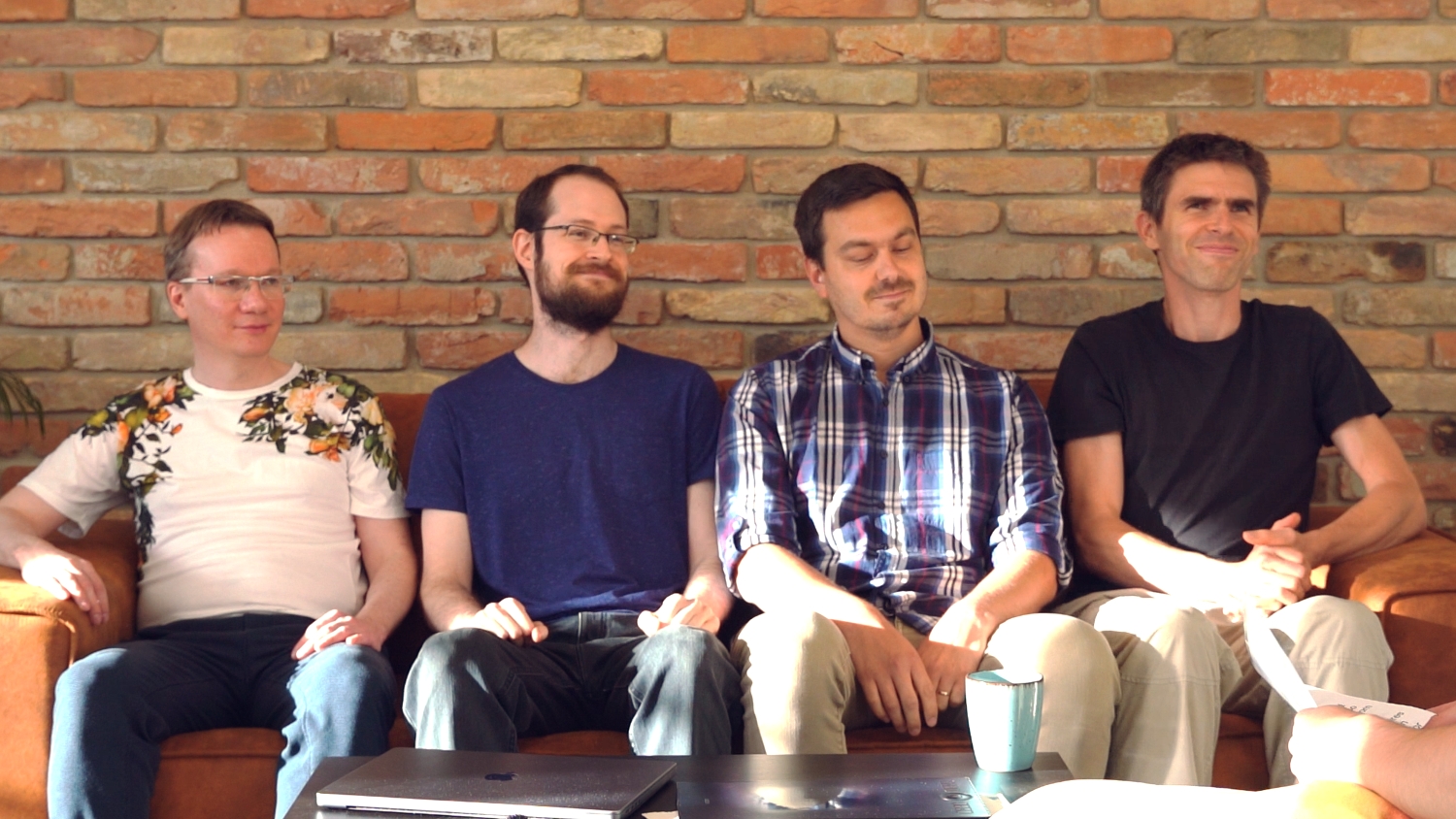It has been 10 years since the first version of Rebelle introduced its unique watercolor simulation to the digital art world. What started as a bold experiment by architect Peter Blaškovič has since grown into one of the most beloved natural media painting applications available today. As a part of the celebration of this milestone, key members of the Rebelle development team look back on the journey so far, explore the evolution of its groundbreaking features, and take a peek at what lies ahead.
To reflect on a decade of innovation, we spoke with four members of the Rebelle development team who have each played an essential role in shaping the software’s evolution:
Michal Fapšo, software architect
Miroslav Sedlák, lead developer
Martin Surovček, senior developer
Pavol Obuch, developer
Watch this interview on YouTube: youtu.be/TtgN-TeEMh0
Can you talk about how Rebelle has evolved, from the first version until now?
Michal: Before the first version of Rebelle was released, Peter Blaškovič spent over two years experimenting with watercolor simulation. That was the most turbulent period for Rebelle’s fluid engine. We then built on this prototype and reused many building blocks from Flame Painter, which gave us a solid foundation for Rebelle 1.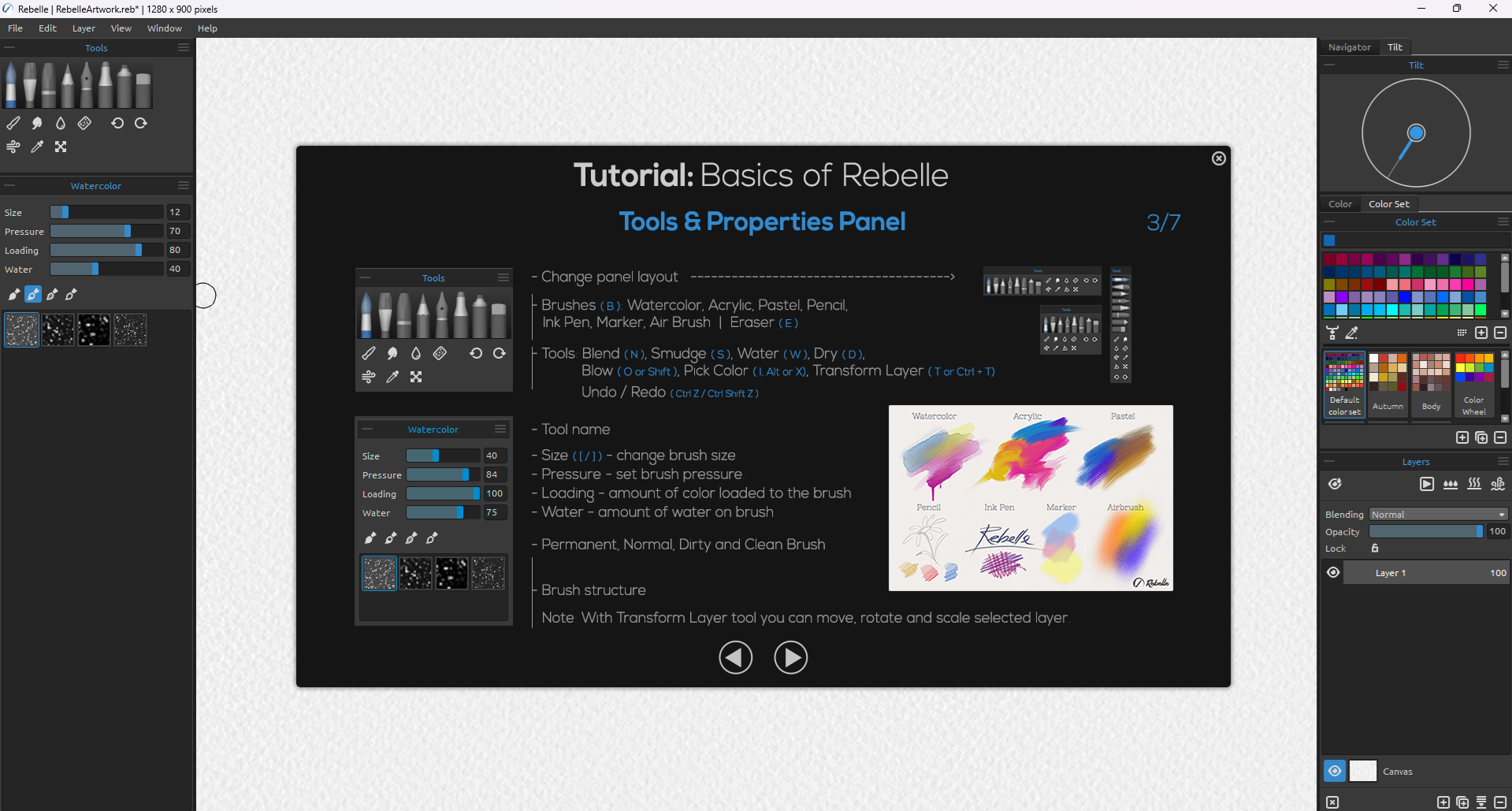 Rebelle version 1 user interface, 2015
Rebelle version 1 user interface, 2015
Miroslav: The first version had only five brush presets and was focused almost entirely on watercolors. Later, we introduced the Brush Creator, giving users advanced control over brush behavior, and expanded into oils with impasto and natural dry media. These new tools required significant changes to Rebelle’s brush engine, but allowed us to introduce the software to a broader audience.
Pavol: Over time, we’ve added features like watercolor drips, NanoPixel rendering with OpenGL, and pigment color mixing developed by our friends Šárka and Ondra from Secret Weapons.
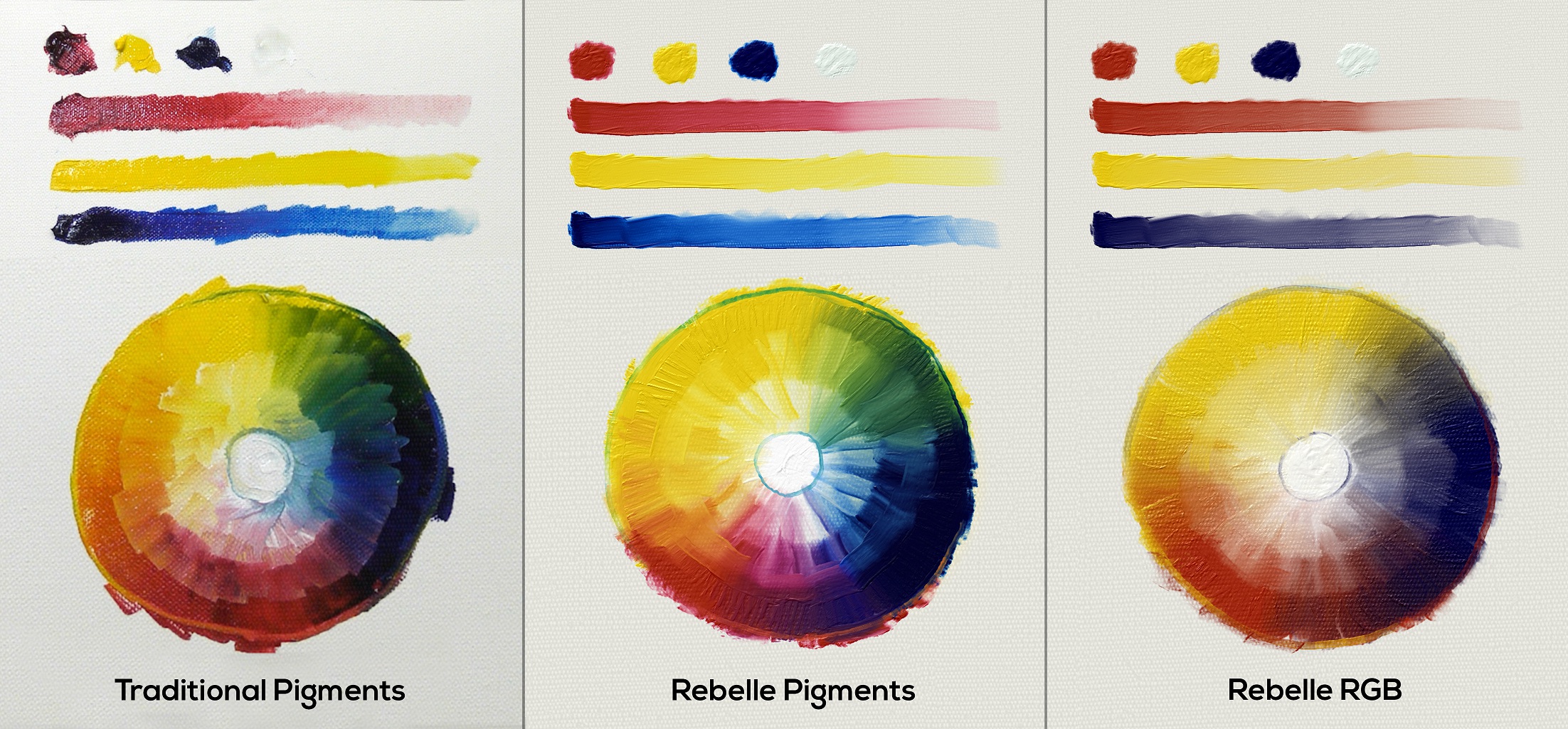 Comparison of Traditional pigments vs. Rebelle Pigments vs. RGB
Comparison of Traditional pigments vs. Rebelle Pigments vs. RGB
Many of these innovations went through a lengthy trial-and-error phase. The final releases show only a fraction of the changes the Rebelle core underwent during research and prototyping.
Rebelle by the Numbers:
- Rebelle 1: 120,000 lines of code
- Rebelle 7: Over 600,000 lines of code
- Current code length if printed: 6 km (3.7 miles)
- 107 versions released (updates & upgrades)
- 5,600 fixes (averaging 2 per day)
How do you balance realism vs. performance?
Pavol: It’s a constant battle, as we want to provide our users with a smooth and responsive painting experience while delivering outstanding visuals. We start with research, observing how real tools behave, and then try to translate that into code. Once we achieve the visuals we’re aiming for, we focus on optimization. We use vectorization and multi-threading to ensure Rebelle runs smoothly even on Peter’s original 10-year-old development computer.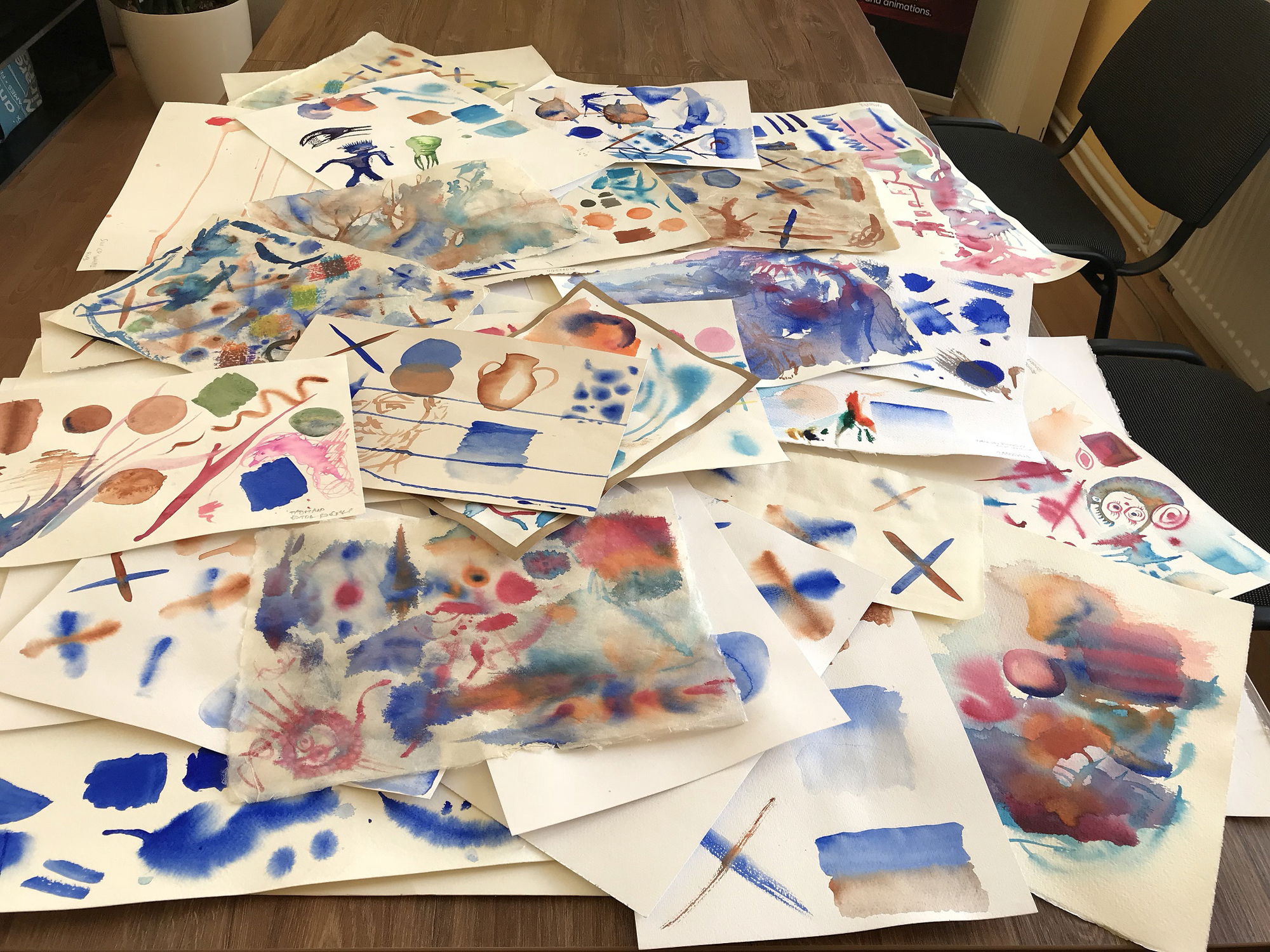 Experiments using traditional watercolor brushes
Experiments using traditional watercolor brushes
What was the biggest technical hurdle in the early stages of development?
Michal: The biggest challenge has always been balancing realism with performance. For instance, during the initial watercolor simulation phase, the painting experience was too slow. We nearly gave up. But then Peter had the idea to pause the fluid simulation during brush strokes and use the full CPU for painting. It made the app not only faster but more responsive for artists.
To mention a more recent hurdle, adapting our codebase for mobile platforms—especially for an iPad version—has required substantial refactoring. There is still quite a lot to do, but it's a high priority for us, and we will continue working on it after the Rebelle 8 release.
Over the years, there were many technical hurdles, but we were able to solve them somehow. We gradually came to the mindset of not worrying when we can't find a solution, because we will it eventually. Sometimes all it needs is a different perspective.
Were there any "happy accidents" — features or design elements that emerged unexpectedly but turned out to be great?
Miroslav: One bug let artists change color mid-oil stroke, which we never fixed because users loved it. That eventually inspired our dirty brush feature.
Michal: We are often amazed by our users who use Rebelle tools or combine them in new, creative ways we haven't imagined before.
What tools or programming languages power Rebelle under the hood?
Miroslav: We use C++ for our core functionality and Qt for the user interface. This setup has been with us from the beginning, giving us performance and flexibility. We also rely on several open-source libraries, and we’re grateful to the community for that support._normal.png) Example of Rebelle code
Example of Rebelle code
Was there any bug that haunted you in your sleep?
Miroslav: While none truly haunted my sleep, there have certainly been a fair share of tricky issues. Especially concerning tablet devices, either with touch gestures or pen input. The challenge lies in the diverse ecosystem of hardware and drivers. Over the years, we've implemented multiple APIs—Windows Ink, Wintab, Windows Pointer Input—to ensure broad compatibility.
Michal: Some bugs may take longer to get resolved, mainly when they're hard to reproduce. We're very grateful to our users for sending in bug reports and crash logs—they’re essential in helping us track down and fix issues.
Do you envision Rebelle expanding into new platforms or technologies?
Miroslav: Yes, we're always looking to the future. Our primary focus for expansion is mobile platforms. We see immense potential in bringing Rebelle's unique painting experience to a wider audience on devices like tablets. However, there's still some work to be done before we can make that leap.
We're refining the UI and UX for smaller, touch-first screens. A major codebase refactoring last year was a key step toward this.
Michal: One unexpected expansion was into the film industry. Pav Grochola from Sony Imageworks reached out with a vision of using Rebelle for watercolor effects in the Spider-Man: Across the Spider-Verse movie. That collaboration led to Rebelle Motion IO.
It's still quite difficult to use for non-programmers, but one of our users is working on a plugin for Blender that would make it usable even for artists. You can find more about it on our forum here.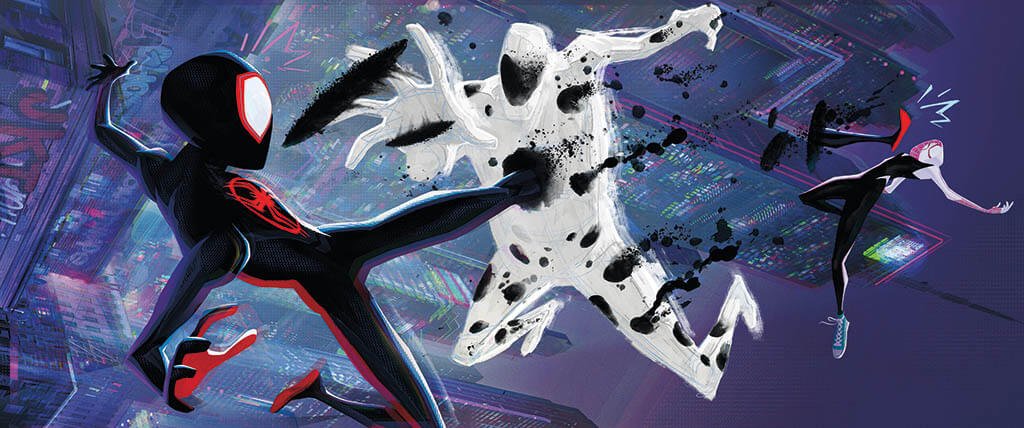 Image courtesy of Columbia Pictures Industries, Sony Pictures Animation, Sony Pictures Imageworks, Marvel
Image courtesy of Columbia Pictures Industries, Sony Pictures Animation, Sony Pictures Imageworks, Marvel
Rebelle 8 is coming soon. Can you hint at some new features artists can look forward to?
Pavol: For Rebelle 8, we wanted to improve our painting engine, especially oil and watercolor brushes, but soon ran into limitations of our old system that we weren’t quite able to overcome. So, we’ve set ourselves a goal to create an entirely new engine from scratch that would allow us to better emulate these tools. We were experimenting and observing the behaviour of real brushes and oil paints, and tried different approaches. We found out that simulating each brush bristle is the only approach that provides us with the flexibility and variability we want. The result is that artists can expect not only more realistic brushes but, surprisingly, also an improved performance. It took us one year to develop this technology.
Martin: While studying oil paintings, I discovered new possibilities that could also be applied to Rebelle. This led to a brand-new oil material, based not only on the new NanoPixel but also on real textures, which were extracted from actual oil paintings. Material realism also requires realistic shadows, so the result was an innovative ray tracing solution for Rebelle that brings real-time soft shadows for a much deeper impasto effect.
This is just a small hint at what´s coming. All Rebelle 8 new features will be introduced in a series of blog posts and videos over the course of the next few weeks. Stay tuned!
What features or accomplishments are you most proud of introducing during these 10 years?
Martin: NanoPixel, without a doubt. We wanted to push Rebelle’s visuals beyond pixel-based rendering. Peter gave me a free hand, and that’s when I came up with NanoPixel technology. It now powers real-time scaling, transformations, and our liquify tool, and it’s only getting better in Rebelle 8.![]() NanoPixel technology introduced in Rebelle 5 Pro, 2000x zoom to paper detail
NanoPixel technology introduced in Rebelle 5 Pro, 2000x zoom to paper detail
Pavol: I must highlight the Brush Engine. It’s become incredibly powerful and versatile, letting us and Rebelle users create everything from pencils to palette knives.
Miroslav: I would probably mention touch and keyboard shortcuts. We implemented them in version 1 and continue to improve support for tablets, which are essential for digital painting. I believe it’s a feature used daily.
Michal: The most important thing for me is the team itself. We’ve worked together for years, overcoming countless challenges. Beyond the four of us here, there are 7 more developers -Tono, Rasťo, Tomáš, Gabo, Jožo, Martin, and Matúš. Veronika and Alžbeta from marketing and support, Jarko and Mykola from web, Marek from graphics, Samuel overseeing social media, and many others who worked with us over the years. And of course, Peter, whose vision and guidance are crucial to the project.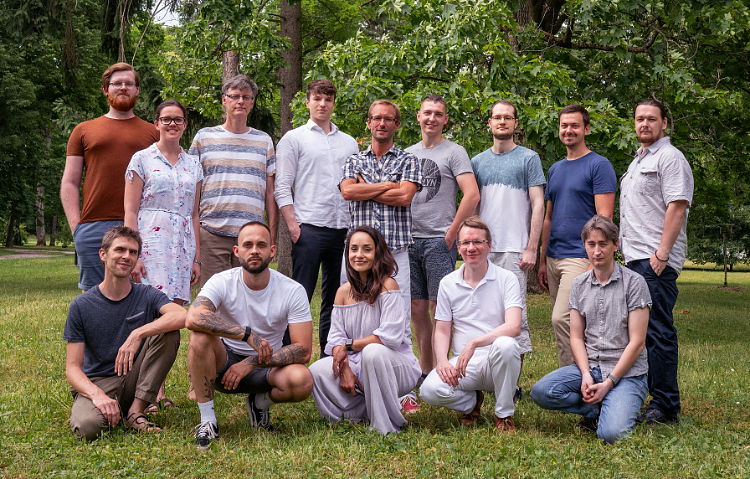
Thank you all for stepping away from the code and daily grind to share insights into the development of Rebelle. From humble experiments to award-winning tools used by digital artists and major studios alike, your passion and persistence have made Rebelle what it is today.

